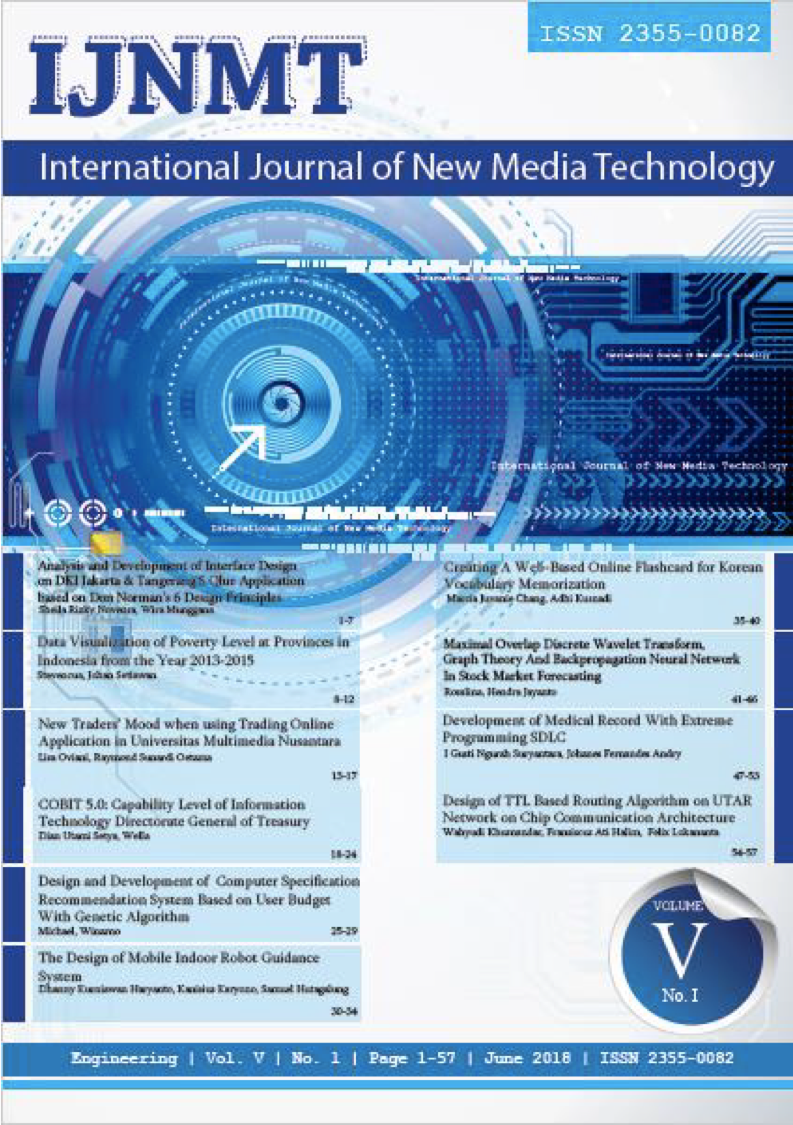Development of Medical Record With Extreme Programming SDLC
DOI:
https://doi.org/10.31937/ijnmt.v5i1.706Abstract
The XP (eXtreme Programming) model is best suited for the development of information systems projects that require rapid adaptation to changes that occur during application development compared to the SDLC Waterfall model. XP is also suitable for fewer team members and is in the same location in software development of medical record. Software development should be well planned, so that the software obtained quality and in accordance with the needs of users. The selection of the right framework will determine the success of software development, thus avoiding patchwork in application development. Step by step of research methods for medical record software are Planning, design, coding, testing and software increment. Studies conducted in this study include: library study, interviews, observation, document examination. Next do an analysis of the aplications made, and check the document to get a picture of the system created. This is done as an analysis and system design conducted by researchers. Selection of the right framework at the time of application development to bridge between the developer side and the user side, so that the developed application can be completed on time. In this research use eXtreme Prorgamming framework which focused on development of medical record, because eXtreme Programming more emphasis on software development and system design with CRC (Class Responsibility Collaborator). XP framework that every step always involves users, programmers, and parts of testing so that the applications created can be completed in a timely manner and in accordance with the needs of users.
Index Terms” CRC (Class Responsibility Collaborator), eXtreme Programming (XP), Medical Record, System.
Downloads
Downloads
Published
How to Cite
Issue
Section
License
Authors retain copyright and grant the journal right of first publication with the work simultaneously licensed under a Creative Commons Attribution-ShareAlike International License (CC-BY-SA 4.0) that allows others to share the work with an acknowledgement of the work's authorship and initial publication in this journal.
Authors are able to enter into separate, additional contractual arrangements for the non-exclusive distribution of the journal's published version of the work (e.g., post it to an institutional repository or publish it in a book), with an acknowledgement of its initial publication in this journal.
Copyright without Restrictions
The journal allows the author(s) to hold the copyright without restrictions and will retain publishing rights without restrictions.
The submitted papers are assumed to contain no proprietary material unprotected by patent or patent application; responsibility for technical content and for protection of proprietary material rests solely with the author(s) and their organizations and is not the responsibility of the IJNMT or its Editorial Staff. The main (first/corresponding) author is responsible for ensuring that the article has been seen and approved by all the other authors. It is the responsibility of the author to obtain all necessary copyright release permissions for the use of any copyrighted materials in the manuscript prior to the submission.















